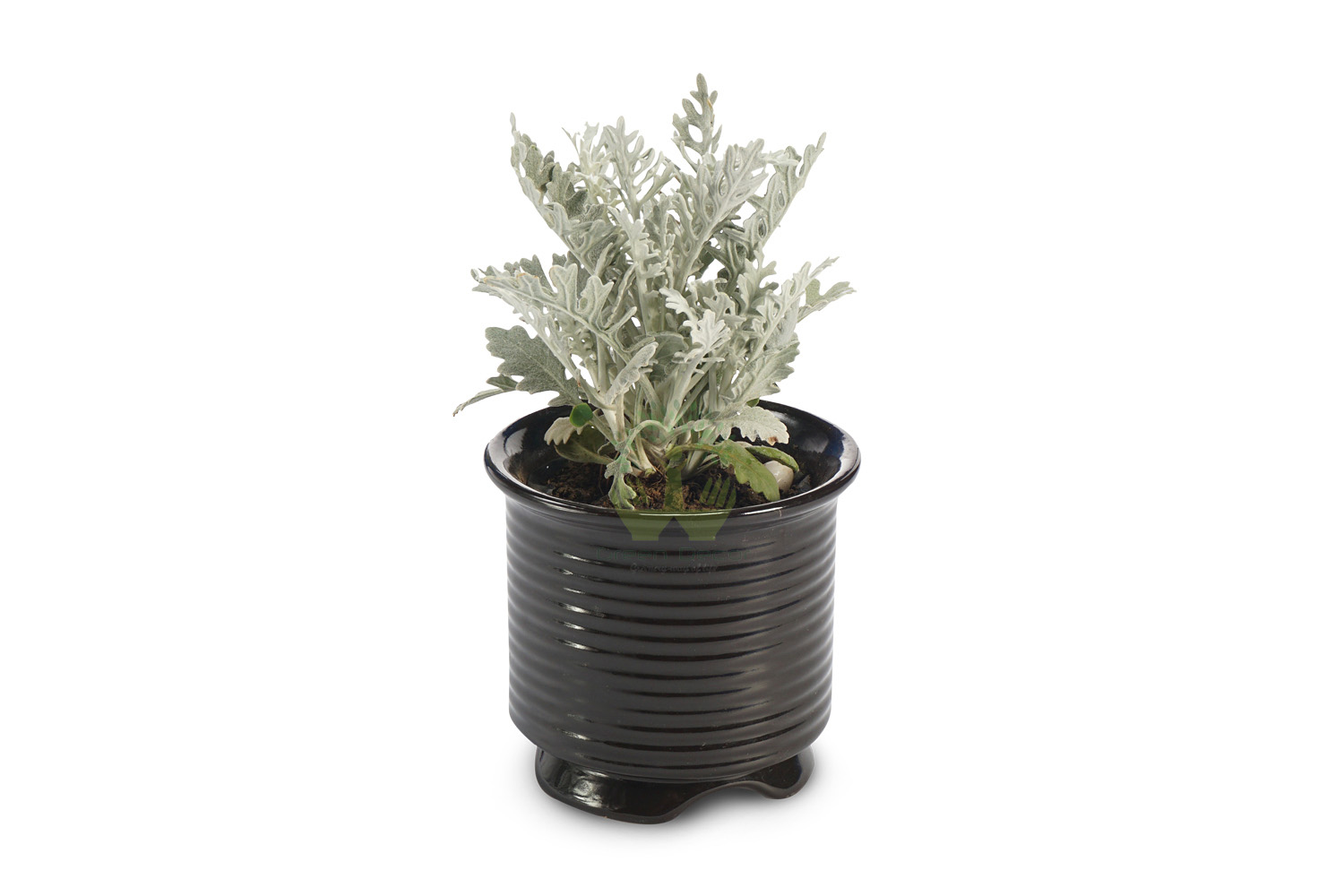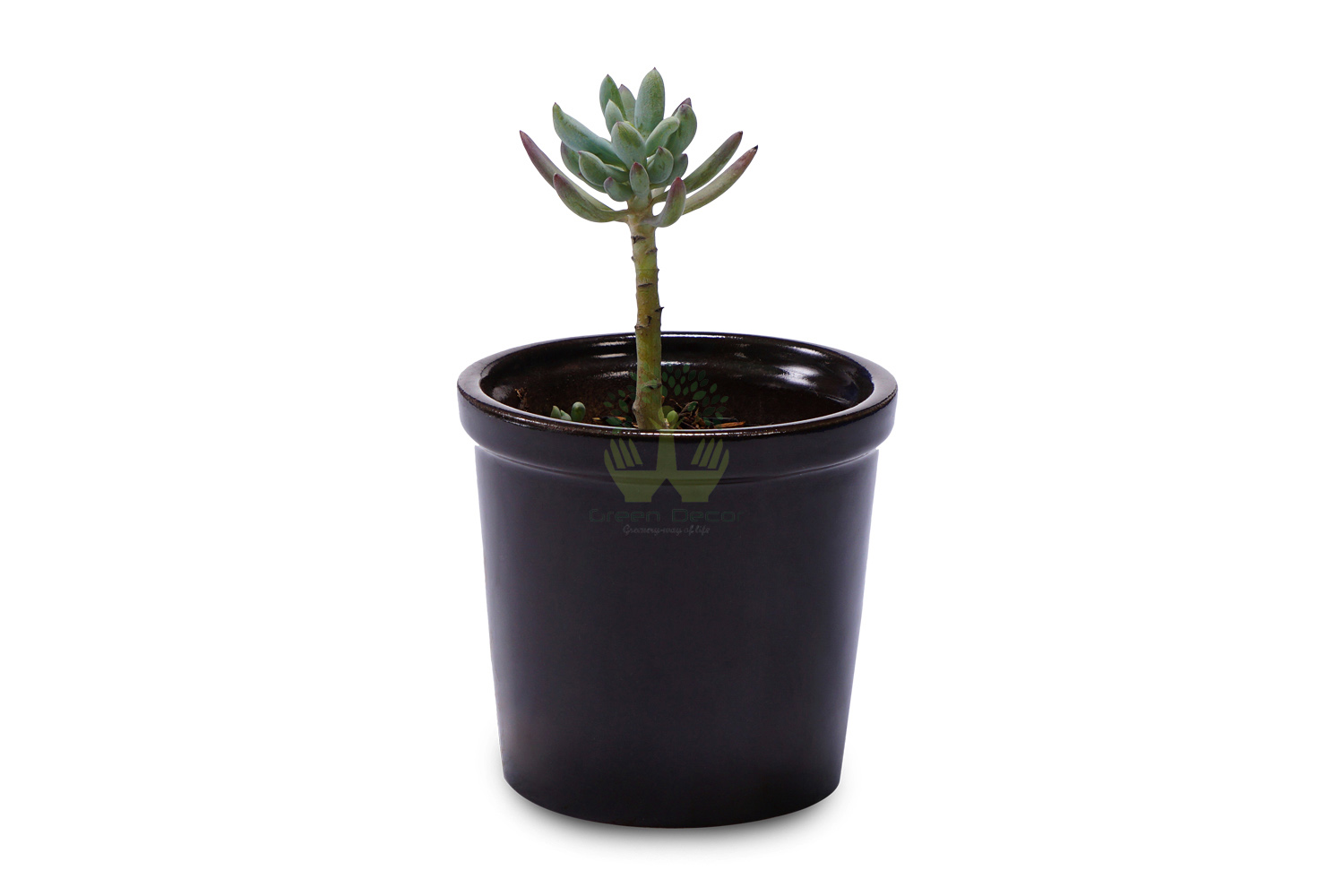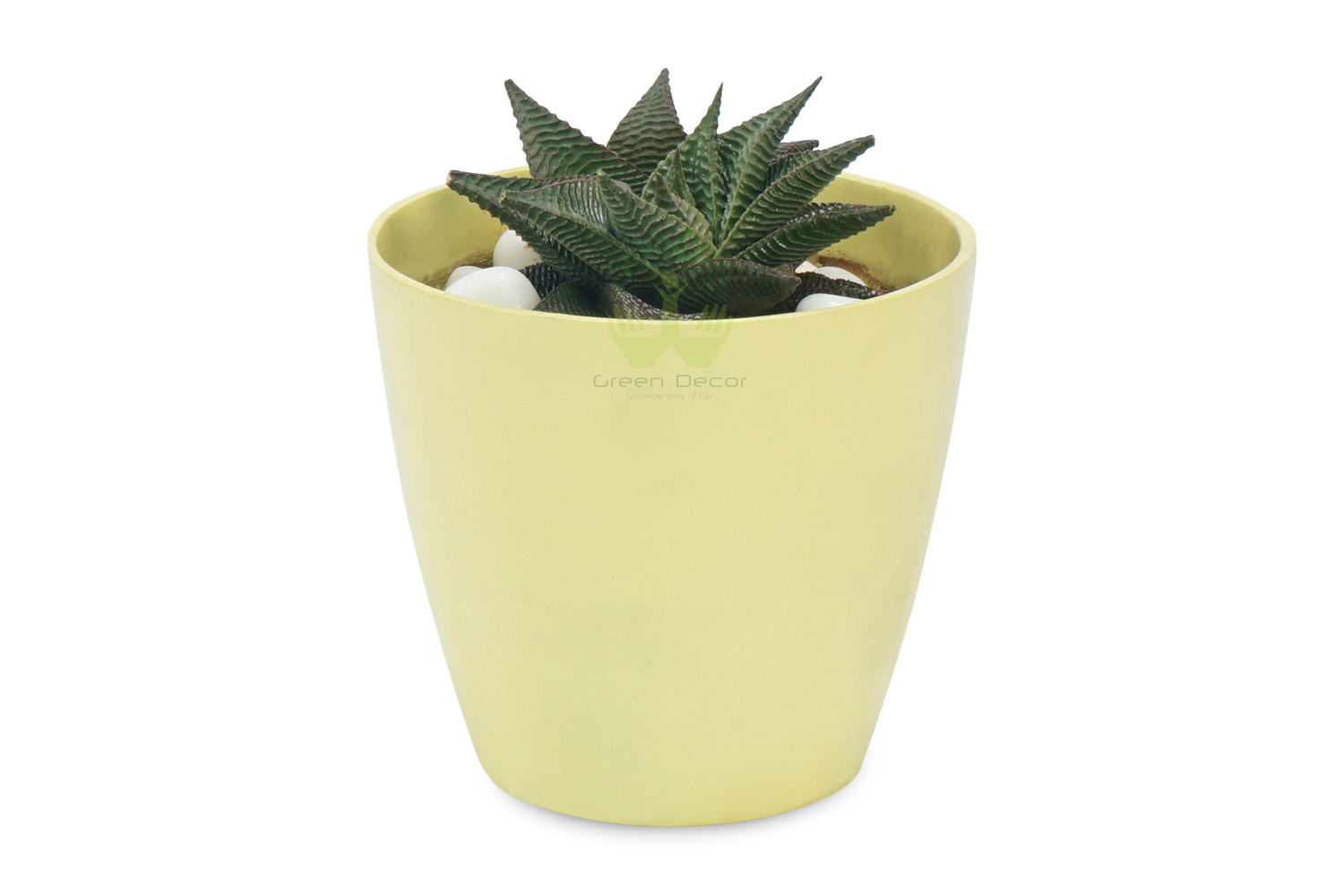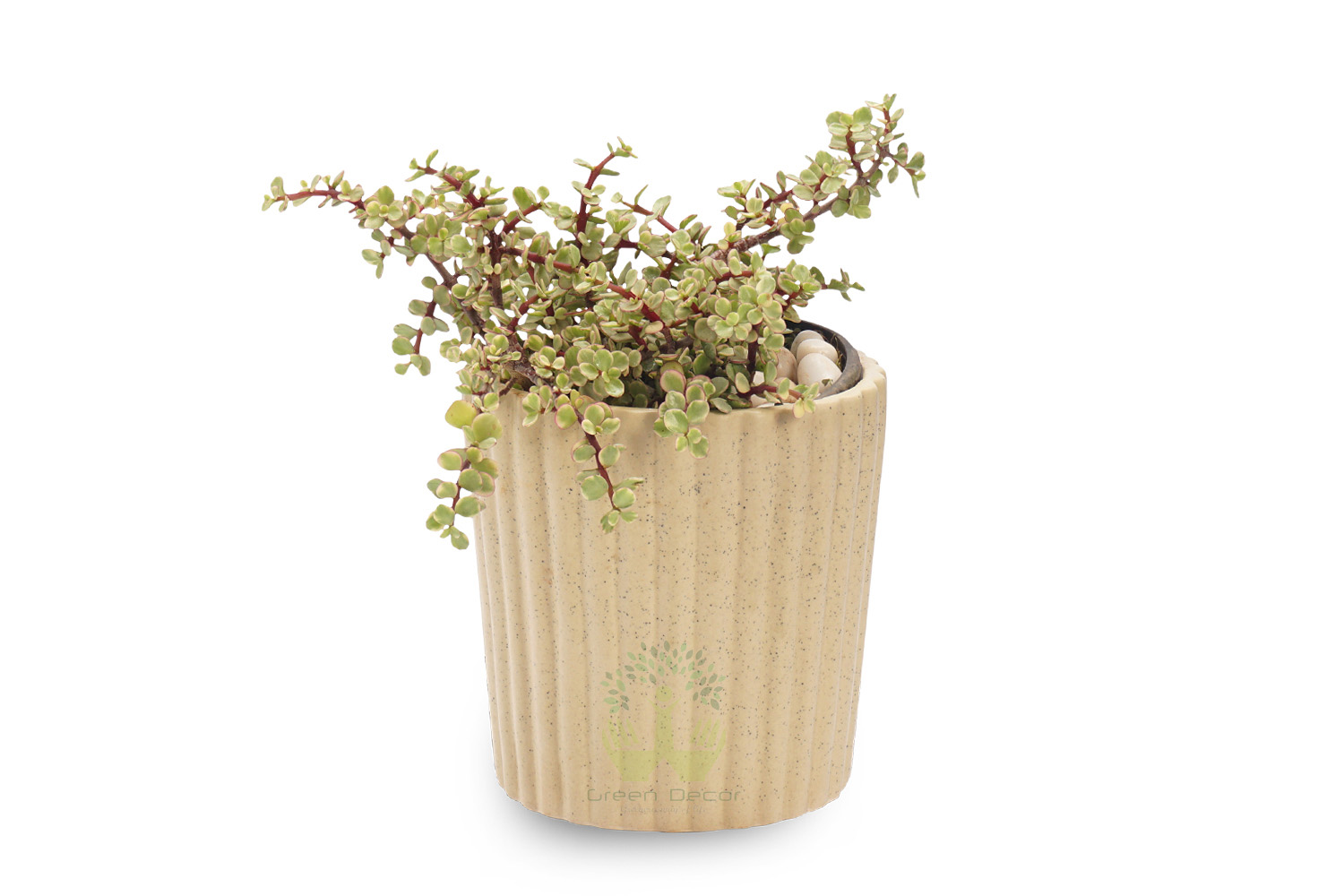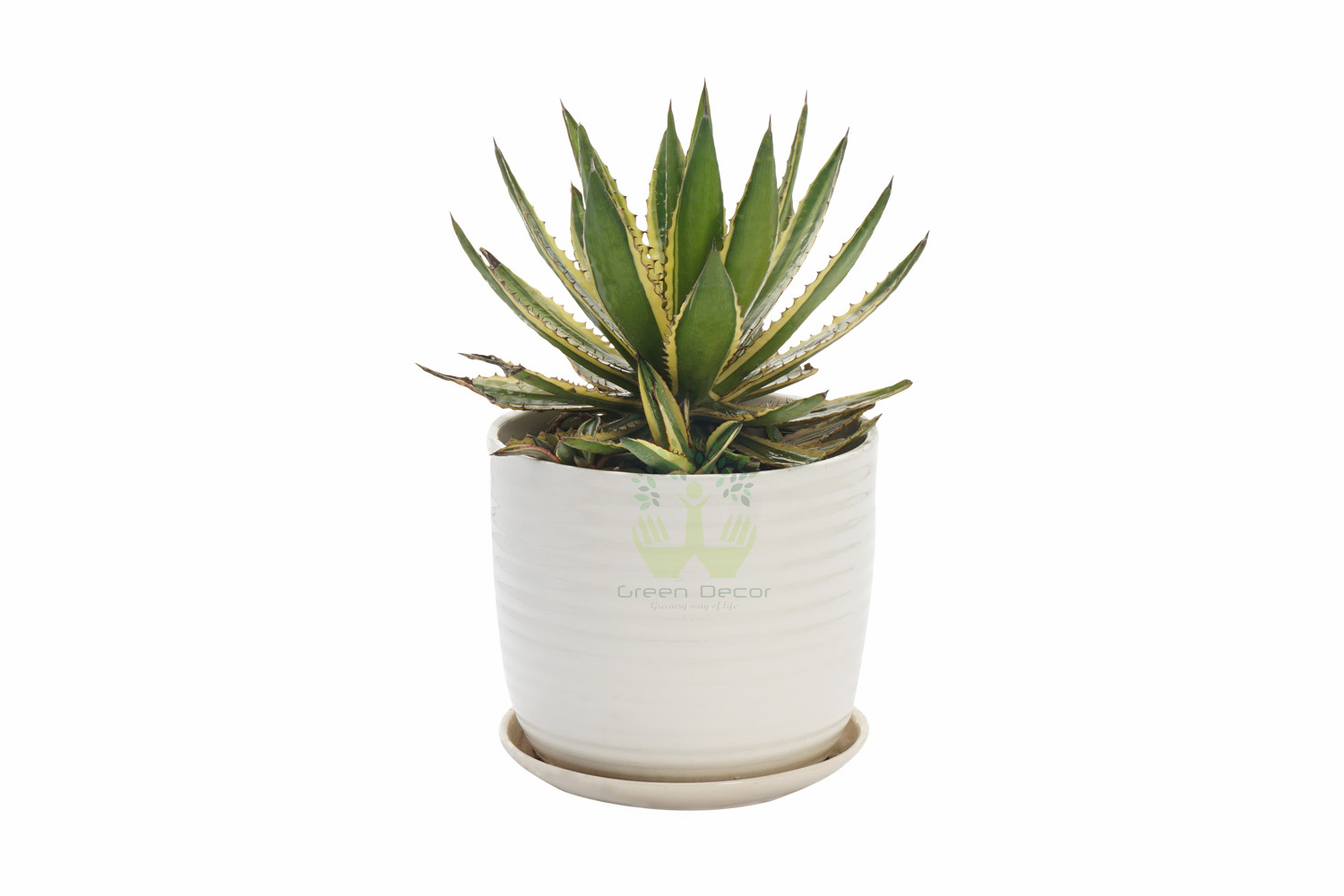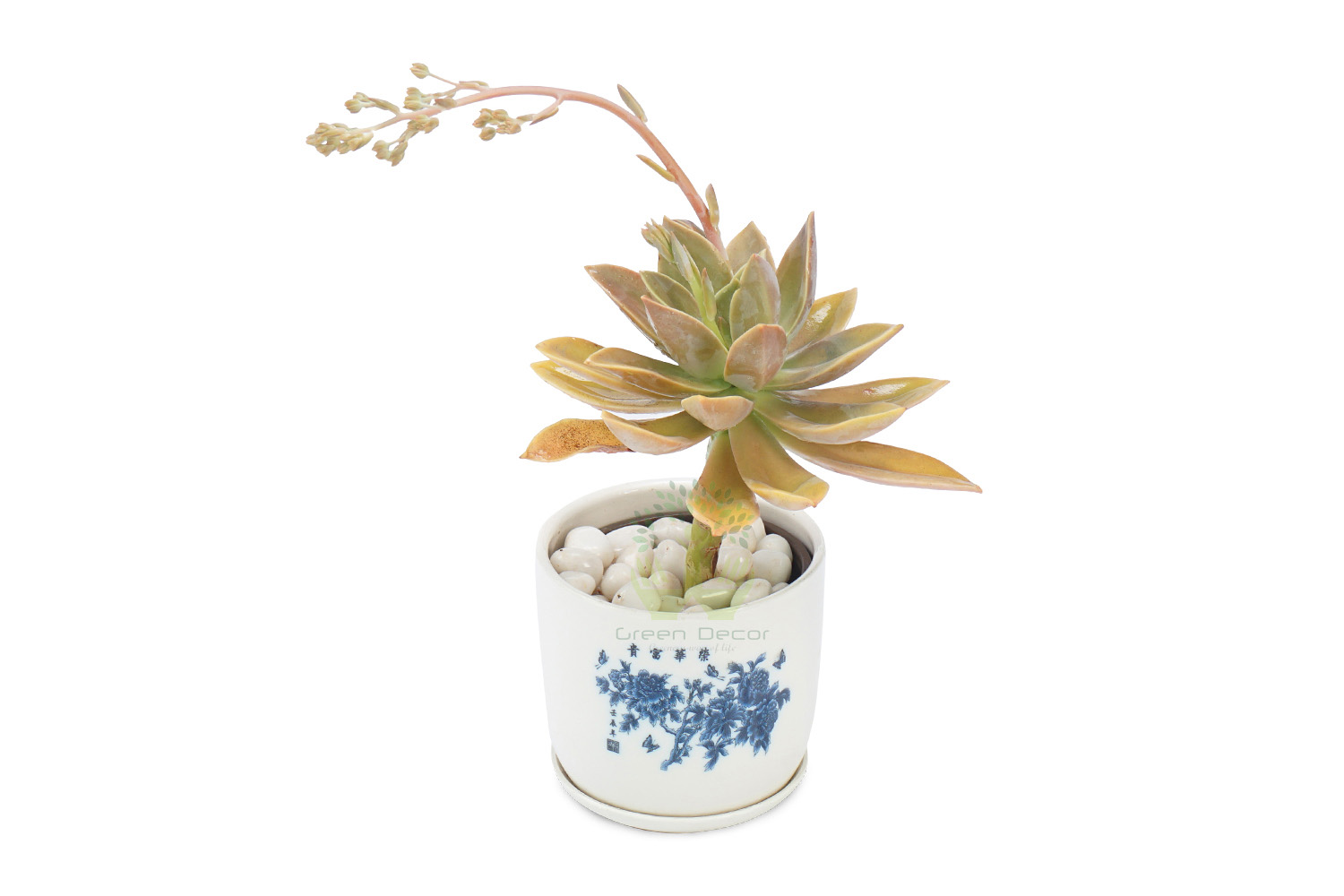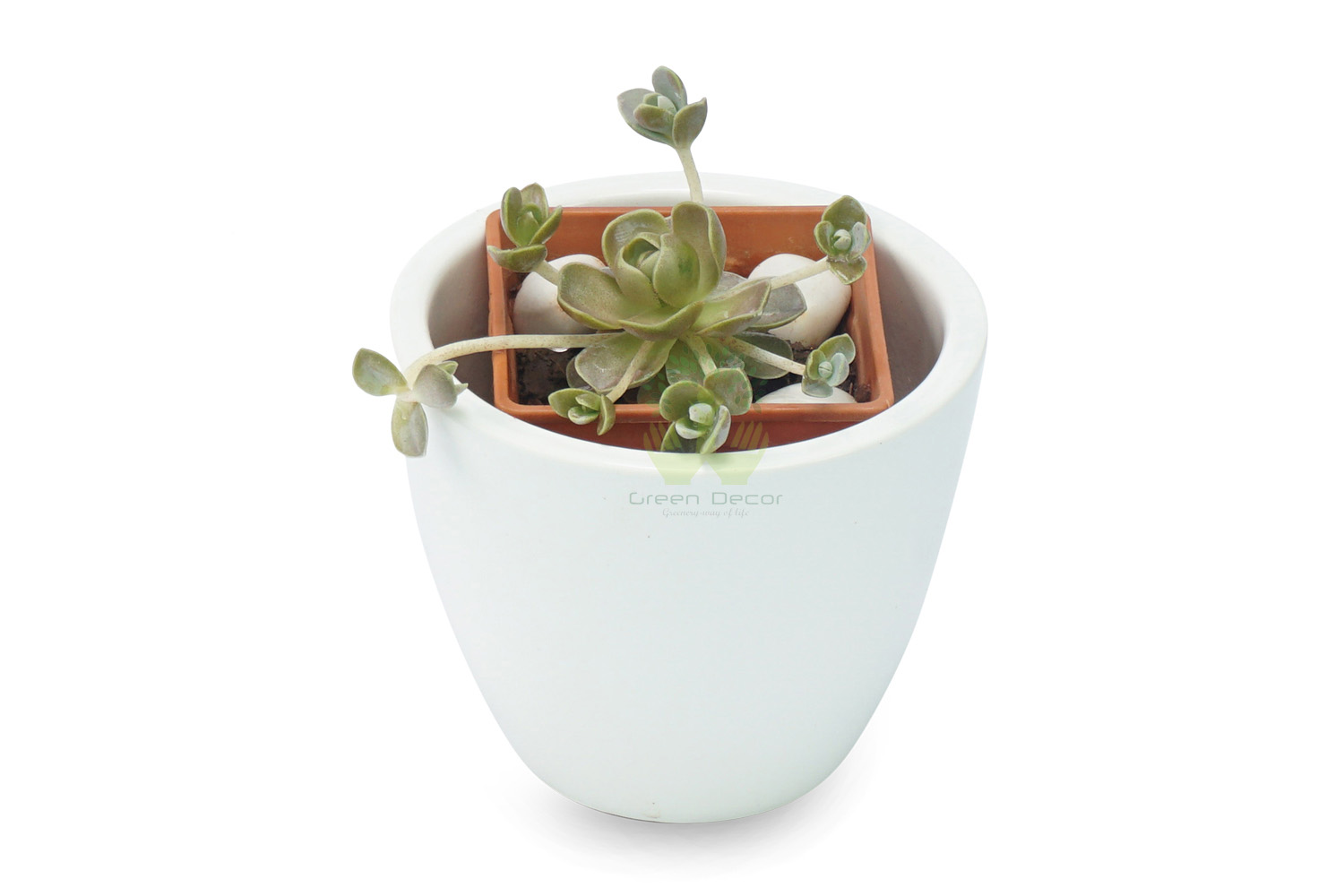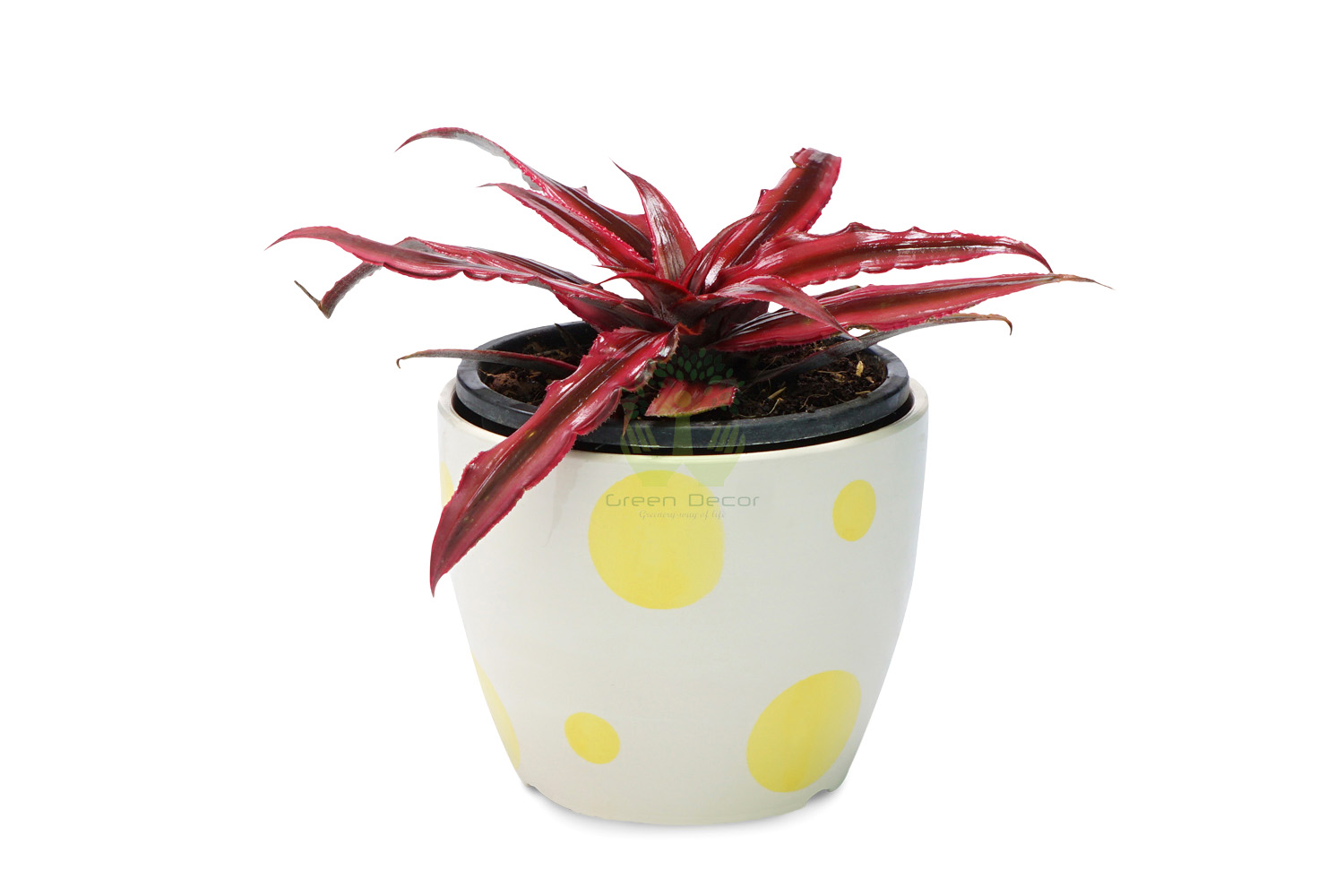Echeveria
352
Maintenance Level
Moderate
Placements
Indoor
Toxic
NO
Fragrance
None
Seasons
All Weather
Plant Height
4" to 12"
Water Frequency
Winter
Weekly
Summer
Twice Week
Fertilizer Frequency
Winter
2-3 Month
Summer
3-4 Month
- About Echeveria
- How To Grow Echeveria
- Benefits of Echeveria
- Maintenance Tips
- Shipping Info
Echeveria ‘Black Prince’ is a slow and low growing succulent plant. It produces clumps of short rosettes up to 3 inches (7.5 cm) wide with thin dark triangular, blackish leaves. These leaves first emerge greenish but darken to a deep lavender brown and with age the lower leaves widen out to as much as 1 inch (2.5 cm) at the base with an acuminate tip that has fine yellow edges. The dark red flowers appear on short stalks in late fall to early winter.
Soil Need
Loamy Soil
Fertilizer (type)
All Purpose Fertilizer
Growth Pattern
Slow
Pruning
1-2 Month
Re-Potting
Every 17-18 Month
Process :
1. Grow succulent houseplants in the brightest spot you have. They love a sunny window sill, but also thrive under bright artificial light, making them ideal accents for your desk at work or school.
2. Succulents store water in their leaves, they don't need to be watered very frequently.
3. Most succulents are pretty slow growing, especially as houseplants, so you typically don't need to worry about pruning them.
4. You can fertilize succulents if you want for faster growth. Spring and summer are the best time to fertilize them; you can use any general-purpose fertilizer.
1. Ornamental Purpose
Do's
1. Remove dead leaves from the bottom of the plant as it grows. These dead leaves provide a haven for pests, and Echeveria are susceptible to mealy bugs
2. Ensures that the whole soil column gets wet, while watering
Don'ts
1. Never to let water sit in the rosette as it can cause rot or fungal diseases that will kill the plant.
2. Avoid afternoon sun altogether as the foliage will burn and stress the plant out.
3. Never use water from a water softening unit, as salt kills plants.



